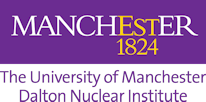
Elemental analysis for nuclear decommissioning
The challenge of speeding up the decommissioning process for radionuclides such as strontium-90.
The background
An increase in demand
As future decommissioning increases the potential demand for rapid screening, quantitation, remediation and verification of 90Sr in environmental samples at very low levels will also increase.
The easy incorporation of certain radionuclides into the biosphere renders their determination a key issue in decommissioning.
The classification and quantitation of decommissioning waste materials can be challenging especially if the sample is complex.
High throughput elemental analysis techniques often lack the sensitivity and selectivity required for some radionuclides such as strontium-90.
The challenge
A novel analytical platform is required for the cost-effective analysis of 90Sr with a fast turnaround time.
As future decommissioning increases the potential demand for rapid screening, quantitation, remediation and verification of 90Sr in environmental samples at very low levels will also increase.
The current Cherenkov counting method available for the 90Sr determination is slow (20-30 days), labour and cost expensive.
The solution
Collinear resonance ionisation spectroscopy (CRIS) offers the solution combining high resolution spectroscopy with high sensitivity ion detection.
Lasers are used to probe the hyperfine structure of the atom of interest, initially employed at CERN to determine the fundamental properties of exotic nuclei. The method efficiently reduces interference species by a factor of more than hundred million (such as 90Zr).
Further development of the CRIS technique at Manchester is being applied to ultra-trace elemental analysis and low abundance isotope ratio mass spectrometry applications such as radiocarbon dating.
This work has resulted in the spinout company Artemis Analytical which has recently secured a grant for a PhD student in collaboration with the NDA.
The benefits
- The use of CRIS combined with ICP-MS allows the rapid quantitation of 90Sr and offers a strategic advantage in terms of understanding its mobility, diminution and control within the environment.
- A comprehensive scientific and technical understanding of 90Sr distribution is of immense value in reducing the costs associated with the risk management of decontamination.
- The universal benefits of CRIS lies in the fact that it can be applied to any element on the periodic table with unrivalled sensitivity and selectivity.
